Jolfa Quarter
Jolfa is a quarter located in the southwestern part of Isfahan. This neighborhood was given to the Armenians of Isfahan during the Safavid dynasty under the reign of Shah Abbas, the Great. This quarter is named after the prior settlement of Armenians in northwestern Iran. Also, Jolfa is the name of a region in the Caucasus Mountains where Armenians have been living for a long time. This region has always witnessed conflicts and disputes between countries and states throughout history. Due to the existence of mines and natural resources, many countries have longed to dominate this region. Shah Abbas the Great, who competed to a great extent with the Ottoman Empire at the time, issued a decree for the forced migration of the inhabitants of the Armenian-populated region of the Caucasus. Armenians inevitably and without prior planning in the winter of 1013 AH begin to migrate to the Iranian plateau. This is where 350,000 people moved from the northwest of Iran to Azerbaijan which is the northern and central part of Iran. During this migration, 100,000 people died in different ways. The rest of the Armenians settled in different parts all over Iran.

Shah Abbas the Great, settled a number of them, who were merchants and engaged in trade and commerce, in an area southeast of Isfahan. These merchants were given loans to start their own businesses in the newly established Safavid capital and to contribute to the government’s economy. Farm lands were also given to them in the same area. Shah Abbas brought the Armenians to the capital to benefit from their religion (they were Christians) and their trade history and their connections with Europeans. Until the time of Shah Abbas I, they had much freedom. At the time of the rise of Jolfa quarter, great nobles such as Nazar, Petros, and etc. were considered the affluent people of the society. They were engaged in industrial activities such as jewelry making and watchmaking. After the death of Shah Abbas, Jolfa never found its old vibrancy.

Vank Cathedral
During the Safavid era, Jolfa quarter had 26 churches. Today, the city of Isfahan has 13 churches. Of these 13 churches, only two churches are open to the public. The main cathedral of Isfahan, called Vank (Amena Parkij), occupies an area of 8,700 square meters. On 3800 square meters of this area the main building of the cathedral are constructed. The first thing that catches your eye about the building is the dome of the Cathedral. Unlike other churches that have conical domes, this Cathedral has a dome just like mosques and fire temples which is a representation of Iranian and Islamic architecture.
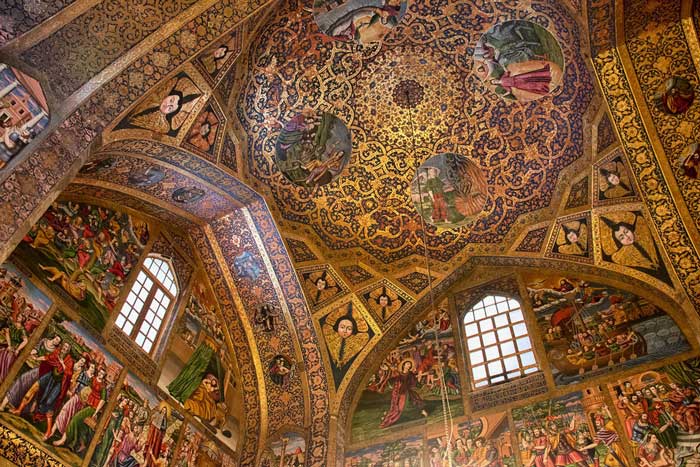
Vank Cathedral consists of several main parts; an entrance with a special church bell, a small cemetery, a memorial monument, the church museum, an anthropological museum, Church’s office building and the main place of worship.
There is a three-story bell at the entrance of Vank Cathedral, which was donated to this church in 1716. Next to this bell, there is a clock that after a long time, still shows the exact time to the public. This clock was also donated to the church in 1930. This Cathedral was originally built over another church. Shah Abbas ordered the construction of the early church in 1014 AH. However, the current building of the Cathedral dates back to 1065 to 1074 AH. Upon your arrival, in the northwestern part of the church, a memorial monument was built in 1975 to commemorate the Armenian Genocide perpetrated by the Ottoman Empire in 1915.
The cemetery, in the southwestern part, is the burial place of some famous Armenians and it is not considered as the main Armenian cemetery in Isfahan. The main museum is located in the northern part of the Cathedral. Items of exhibition such as the first printing press in Iran can be seen here. Khachatur Kasaratsi was the first person to introduce the printing industry to Iran. The first printed copies, including the Torah, the Bible, and other holy books, are on display at the museum. Another object that can be seen in this museum is a strand of hair on which the sentence “Learn literature and wisdom to understand the words of the wise” has been written with great delicacy. This is the first Armenian sentence that has been hacked into a girl’s hair by its inventor, Masrup Mashtut. At the entrance of this museum, a statue of Khachatur Kasaratsi and Masrup Mashtut can be seen. The southern part is dedicated to the Anthropological Museum of Vank Cathedral. The museum contains items belonging to Armenians who lived in this quarter many years ago. These include typewriters, old kitchen utensils, handmade musical instruments, baptismal fonts, and more. At the end of the Anthropological Museum, there are pictures of influential Armenian figures.
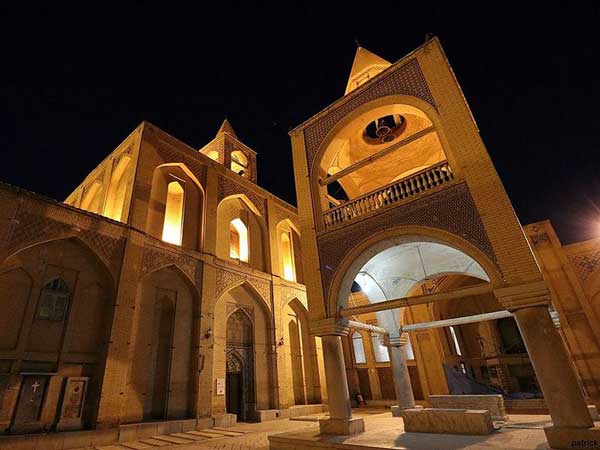
The main part of the Cathedral is the most beautiful and eye-catching part of this monastery. European-style paintings dazzle the eyes of every viewer. These paintings are the works of Khaje Minas, Stephen and Mercur. The time of painting of these murals coincides with the reign of Shah Safi and Shah Suleiman of Safavid Dynasty. These murals are oil paintings drawn on a plaster background. The murals tell stories from the Torah and the Bible. Stories such as the baptism of Jesus by Johana, the gifts brought to Moses, the appearance of devil in Moses’s way, and the story of the people of Lut are such narratives that are depicted on the walls of the Cathedral. The most important and largest mural is the one on the eastern wall which depicts the story of resurrection. On this mural, the people of heaven and the hell are immersed in their blessings and pains. Israfil, the divine angel, is seen blowing in his trumpets on the left. In the upper part, a person is seen crying and wailing. He is the Khaje Avdik who was the founder of this Cathedral. The devil has fallen at the feet of an angel. Notably, the devil’s lack of despair in trying for his devilish acts is obvious. He has placed his tail on the part of the scale that is related to sins and evil deeds, so that the scale of justice will find man guilty of sins.
This Cathedral, with all its impressive beauties, still retains its grandeur. It is home to 3,000 Armenians in Isfahan who still keep the lights of this church on and create a pleasant atmosphere with their songs of prayer and whispers.
Jolfa Quarter FAQs
Vank Cathedral is open:
Everyday 09:00 – 17:00
Hermes Cafe Resturant and khangostar
Music museum
(4.9 km) from Narcis B&B (about 18 min driving )
This atraction is part of Isfahan grand tour in Narcis B&B

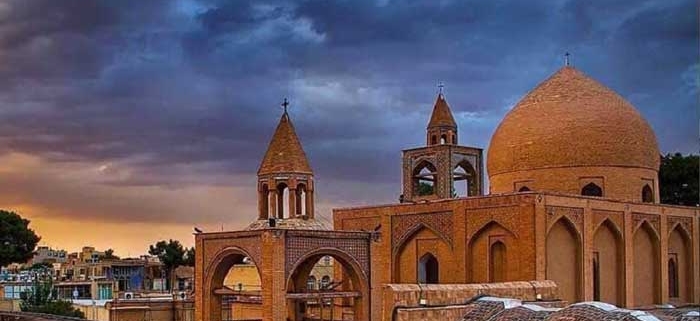
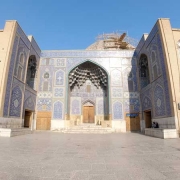
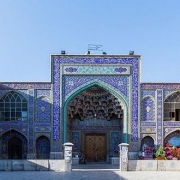
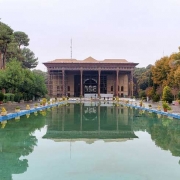
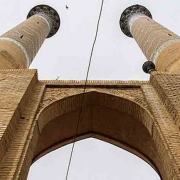
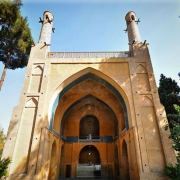
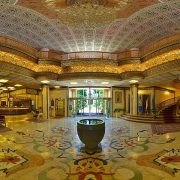
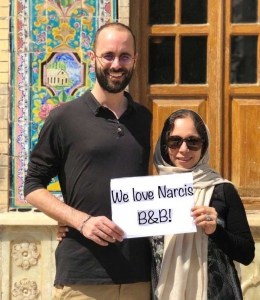




Leave a Reply
Want to join the discussion?Feel free to contribute!